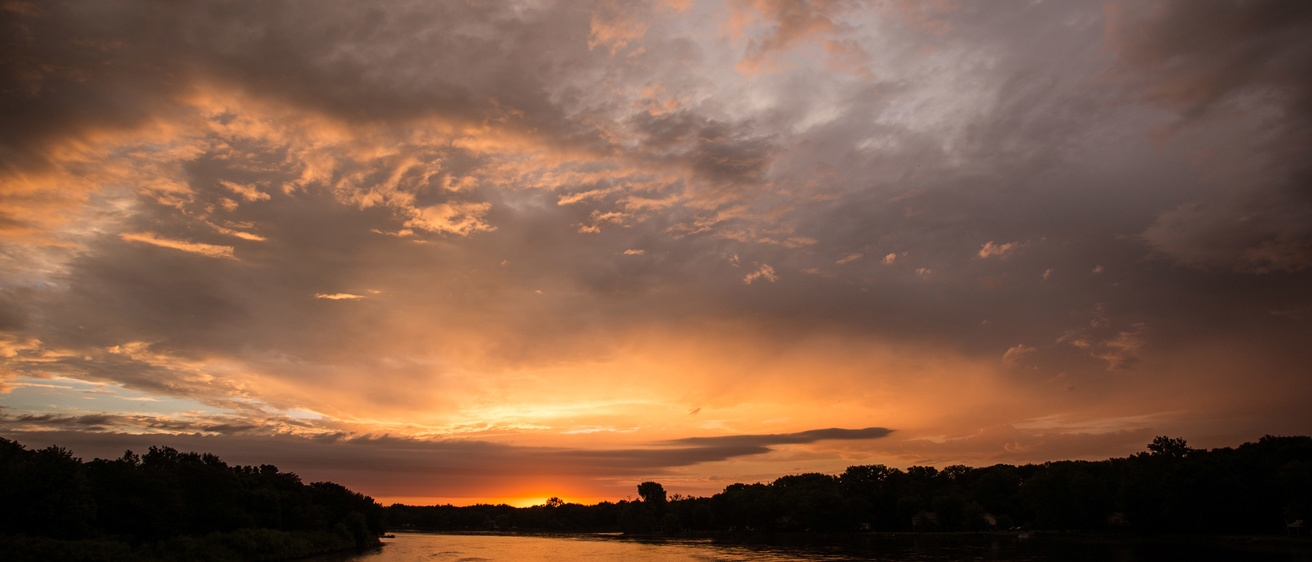Main Areas of Research
1. Flood propagation and mitigation of geological hazards associated with floods and dam breaks
Development of numerical tools for flood propagation in natural streams and dam break problems using fully 3D, non-hydrostatic RANS models with deformable free surface capabilities, numerical simulation of floods in watersheds using 1D Saint-Venant solvers, hysteresis effects associated with flood wave propagation in river channels, mudflows and dam break problems involving non-Newtonian fluids.
2. Eco-hydraulics
Flow in vegetated channels, restoration of ecological habitats in rivers, fish passage studies for several hydropower dams in the Pacific Northwest, temperature stratification studies in the forebays of hydropower dams related to optimizing operation of dams to reduce fish kill, near-bed flow, turbulence and hydrodynamics of biologically-conditioned labile river channels populated by benthic organisms, flow and hydrodynamics and local scour around isolated freshwater mussels and mussel beds.
3. Stratified flows
Study of the physics of intrusion gravity currents and bottom-propagating gravity currents propagating over smooth flat and inclined surfaces and over surfaces containing large-scale roughness elements (ribs, dunes, cyclic steps), interaction of gravity currents with pipes situated at or close to the bed (hazards mitigation),dynamics of breaking internal solitary waves, interaction of gravity currents with submerged dams and arrays of fences, study of the ejection of non-buoyant and buoyant miscible contaminants from bottom-river cavities.
4. Lake hydrodynamics and lake ecology
Bio-convection induced by swimming bacteria in stratified high-altitude lakes, wind induced circulation in stratified lakes, generation of gravity-current-like intrusions by diurnal cooling in the near-shore regions of lakes.
5. Flow in porous media & vegetated canopies
Unidirectional and oscillatory flow in channels containing patches of emerged/submerged vegetation and aquatic canopies, gravity currents propagating into a porous medium or in a channel containing a porous layer, radiation driven convective mass exchange in fresh-water systems containing zones with floating vegetation, flow past porous barriers and fences, snow drift implications, flow past porous cylinders.
6. Shallow flows
Shallow mixing layers; investigation of flow hydrodynamics, mixing, stratification effects and erosion mechanisms at lowland and mountain river confluences with concordant and discordant beds; shallow wakes; shallow open channel flow past bedforms.
7. Prediction of flow, sediment transport, and bathymetry changes in open channels with alluvial beds
Prediction of flow, sediment transport and morphological processes in curved bends and river meanders, study of the flow physics using eddy resolving techniques, improvement of sediment pick-up formulas used in RANS based solvers with a movable bed, flow resistance over river beds containing macro structures.
8. Flow, mixing and transport processes around hydraulic structures
Flow and contaminant transport processes at river groynes, flow and transport processes around bridge piers and abutments, optimizing design of hydraulic structures to reduce flood hazard, development of new generalized design guidelines for protection against erosion at bridge abutments, design of water pump intakes.
9. Wind engineering and fluid-structure interactions
Optimization of snow fence design, prediction of the air flow fields around rain gauges, development of new simplified procedures to estimate wind loads on truss and bridge support structures for highway signs, updating AASHTO standard for drag coefficients on traffic signs
10. Rough bed boundary layers with large-scale roughness elements
Spatial development and structure of flow in boundary layers over mussel beds, boundary layers over boulders in open channel flows
11. Other topics
Study of flow disturbances and measurement errors induced by a boat-mounted Acoustic-Doppler Current Profiler in a channel, development of methodology to assess performance of methods used to generate turbulent inflow conditions (synthetic turbulence) in CFD simulations, recognition and characterization of coherent structures in turbulent flows, use of close-range photogrammetry for remote tracking of temporal evolution of snow deposits in the field.
